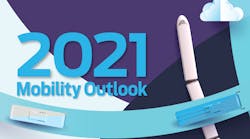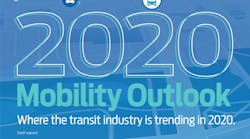In the fourth iteration of Mass Transit’s annual Mobility Outlook survey, the industry remains in a state of transformation. Lingering impacts from the pandemic, such as reduced ridership remain, but survey respondents from transit agencies report ample opportunities for services to expand and shift to better serve their respective communities.
The majority of agency respondents reported increased budgets in 2023 but slightly less than half, 46 percent, anticipate budget shortfalls within the next two years. On the private side of the industry, suppliers, manufacturers, consultants and other non-agency entities also report budgets that are up or significantly up in 2023.
Top challenges citied among transit agency respondents include recruitment, supply chain and inflation issues while the private side of the industry’s top concerns (in order) were inflation, recession concerns and staff retention issues.
With challenges also comes opportunities. Transit agency respondents reported their top opportunities of the next year will be improving the rider experience with new technologies, improving mobility option integration and investing in new technology for internal efficiencies. Private companies are looking to harness opportunities to improve customer experience, find and develop new collaborations and invest in technology upgrades.
How was this information gathered?
Mass Transit queried transit agency subscribers, as well as representatives from private companies during a two-week period in January 2023. The survey received 157 responses, with 115 from transit professionals and 43 from non-transit agency professionals. The survey included intelligence with separate questions being asked of the two groups. For example, the survey only asked transit providers if they planned to purchase vehicles in 2023.
An ideal world would allow the survey to be answered by every transit provider in North America, but this is not practical. We do believe the data found within this survey offers valuable insight as the industry continues to emerge from under the umbrella of the pandemic.
The preliminary report is viewable in the February issue.
The expanded report can be downloaded below.






